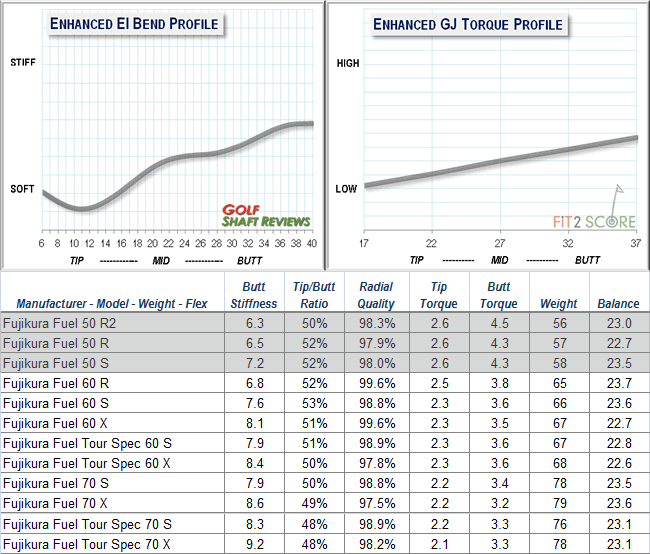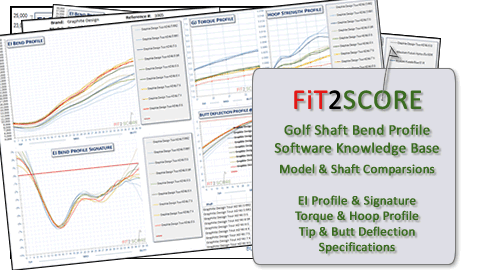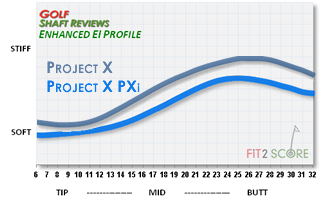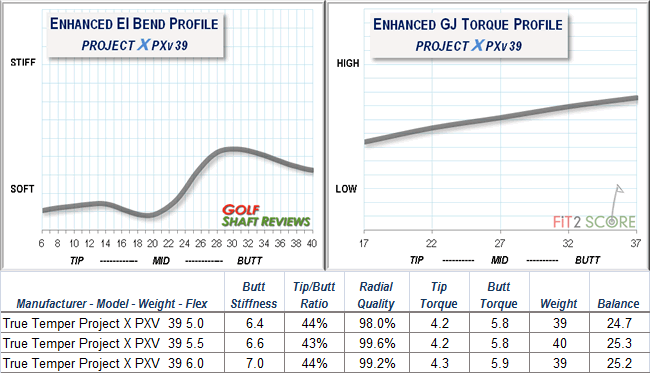FUJIKURA FUEL DRIVER SHAFT

The Fujikura Fuel shaft was introduced just prior to the 2013 PGA Merchandise Show and was named “the most talked about shaft at the Show”. The Fuel continues to create a lot of buzz in the print media and on the internet. Let’s take a closer look and see what all the buzz is about.
According to Fujikura, the Fuel is a low launch/low spin shaft designed for drivers, fairways and hybrids. The shafts are constructed with a series of high modulus carbon plies oriented at 45 and 90 degree angles in the butt and mid sections which their engineers claim reduce ovaling during the loading and unloading of the shaft. We have found through our testing and fitting process that the Fuel shafts are extremely stable with low launch and low spin characteristics as claimed by Fujikura.
Like many shafts, the Fujikura Fuel profiles vary with weight. As you will notice in the EI bend profiles below, the 50 gram shafts have a fairly soft overall profile with a relatively stiff tip. This stiff tip feature makes this shaft feel extremely tight and stable for a mid 50 gram shaft. We have found through our fittings that it will feel and play slightly stiffer than its flex rating. It is an excellent light weight option for a player that can load a shaft or that has a quicker tempo, or both.
The 60 gram, Tour Spec 60 gram and the 70 gram models have a slightly different bend profile than the 50 gram models. These heavier models are stiffer in the butt and mid sections, with a smoother profile in the tip section. The stiffer butt and mid sections make these models feel extremely stable (ie stiff) in the hands and give these shafts an overall stiff feel. The low torque of these shafts adds to their overall tight/stiff feel at impact. Our testing and fittings confirm that these are definitely low launch shafts.
The Tour Spec 70 gram S and X flex models have a very different profile than the other models. The bend profile shows a very stiff upper-mid section with a smooth but rapid decline in flex to the tip. These models are again extremely stable because of the stiff mid section, and are excellent choices for heavy hitters looking to lower ball flight in both drivers and fairways.

Fujikura Fuel Tour Spec 70 gram
Our testing and fittings confirm that the Fujikura Fuel shafts definitely provide the low launch characteristics claimed by Fujikura. The 50 gram models have slightly higher launch and spin than the other models, but are still low for a mid-50 gram shaft. The design, construction and bend profiles of these shafts contribute to the overall stiff/tight feel that the player will experience when playing these shafts. The Fuel shafts are a good option to consider for a player looking to lower his or her launch conditions.
 The Highlands Performance Golf Center, Carrollton Texas
The Highlands Performance Golf Center, Carrollton Texas ![]()










